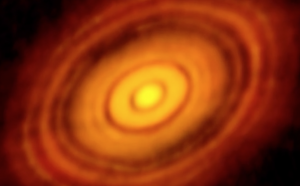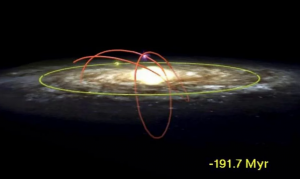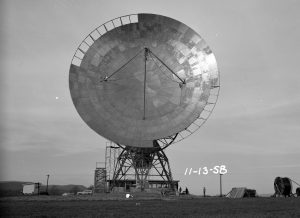NRAO Director Tony Beasley discusses the impact of ALMA’s new high resolution observations of HL Tau.


Round and Round the Microquasar Goes
Path of the microquasar (red) known as Scorpius X-1 compared with the path of the Sun (yellow) through the Milky Way Galaxy for the past 230 million years. A microquasar is a pair of interacting stars where one of them is usually a dead star, such as a neutron star or a black hole. Material from the normal star is streaming around and on to the remnant, creating a disk of material. Magnetic fields wreak havoc on the material, whipping it up and out of the disk as enormous jets.

Panel Installation on 85-1
Each panel on the Tatel telescope (85-foot) was 0.125 inches of thick aluminum. In this image taken from the from front of the telescope, we can see that it is near completion with only 19 or 20 panels left to place.

Collapsed metal of the 300-foot telescope
On the night of November 15, 1988, the 300-foot telescope in Green Bank, West Virginia collapsed. The extent of the damage was not known until the Sun rose on the scene. This photo shows the incredible ruin of folded steel that greeted the staff in the morning.

The Mangled Steel of the 300-foot
Staff members, who were assessing the amount of damage the collapse had caused, said the downed telescope looked “more like caramel than steel” when they came to inspect the ruins.

A VLA Transporter stopped on the tracks
There are only two Antenna Transporters at the Very Large Array that are used to move antennas into new configurations. Here we can see the massive red machine stretched across the tracks.





